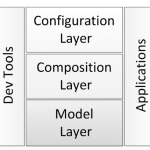BioMA - Biophysical Model Applications
Marcello Donatelli; Simone Bregaglio; Fabrizio Ginaldi; Giovanni Cappelli; Davide Fanchini; Dario De Nart; Gianni Fila (CREA - Council for Agricultural Research and Analysis of Agricultural Economics)
Overview
| Model category | CSM |
|---|---|
| Plant part | Shoot |
| Scale | Field |
| Licence | open_source, freeware |
| Operating system | Windows |
| Programming language | C-sharp |
| Format of model inputs and outputs | Anything implementing the readers interfaces (soil, weather, agricultural management, parameters) |
| Species studied | Generic-crops |
| Execution environment | Console, Stand-alone application |
Scientific article
Enhancing Model Reuse via Component-Centered Modeling Frameworks: the Vision and Example Realizations.DONATELLI Marcello; CERRANI IACOPO; FANCHINI DAVIDE; FUMAGALLI DAVIDE; RIZZOLI AndreaENVIRONMENTAL MODELLING & SOFTWARE, 2012 View paper
Model description
BioMA (Biophysical Model Applications) is a public domain software framework designed for developing, parameterizing and running modelling solutions based on biophysical models in the domains of agriculture and environment. It is based on discrete conceptual units codified in extensible software components. The goal of this framework is to bridge from prototypes to operational applications, enabling running and comparing different modelling solutions. A key aspect of the framework is the transparency which allows for quality evaluation of outputs in the various steps of the modelling workflow. The framework is based on framework-independent components, both for the modelling solutions and the graphical user's interfaces. The goal is not only to provide a framework for model development and operational use but also to provide a collection of objects re-usable either standalone or in different frameworks. The software is developed using Microsoft C# language in the .NET framework.
Some case studies
Deployments of the platform and its tools and components have been used:
- to create weather datasets for biophysical simulation,
- to assess the impact on crop production in Europe, and adaptation,
- to simulate the development of soil pathogens under climate change,
- to reproduce the growth and development of tree species,
- to estimate the survival of insects damaging maize under climate change,
- to estimate crop suitability to environment,
- to perform modelling solutions comparison at sub-model level,
- to develop a library of reusable models for crop development and growth,
- to estimate the impact of climate change on crop production in Latin America,
- to simulate fungal infections and the dynamics of plant epidemics,
- to estimate agro-meteorological variables,
- to develop a library of functions to estimate soil hydraulic properties,
- to estimate quality of agricultural products,
- to simulate the timing and the application of agricultural management practices,
- to develop a library to perform sensitivity analysis on agricultural models,
- to define a library to evaluate crop model performances in reproducing field experiments,
- to develop a new model of quantitative and qualitative aspects of winter rapeseed productions,
- to adapt the Canegro sugar cane model for giant reed.
BioMA applications and modelling solutions are the simulation tools used by the MARS unit of the European Commission to simulate agricultural production under scenarios of climate change. BioMA is also used in the EU FP7 project MODEXTREME.
